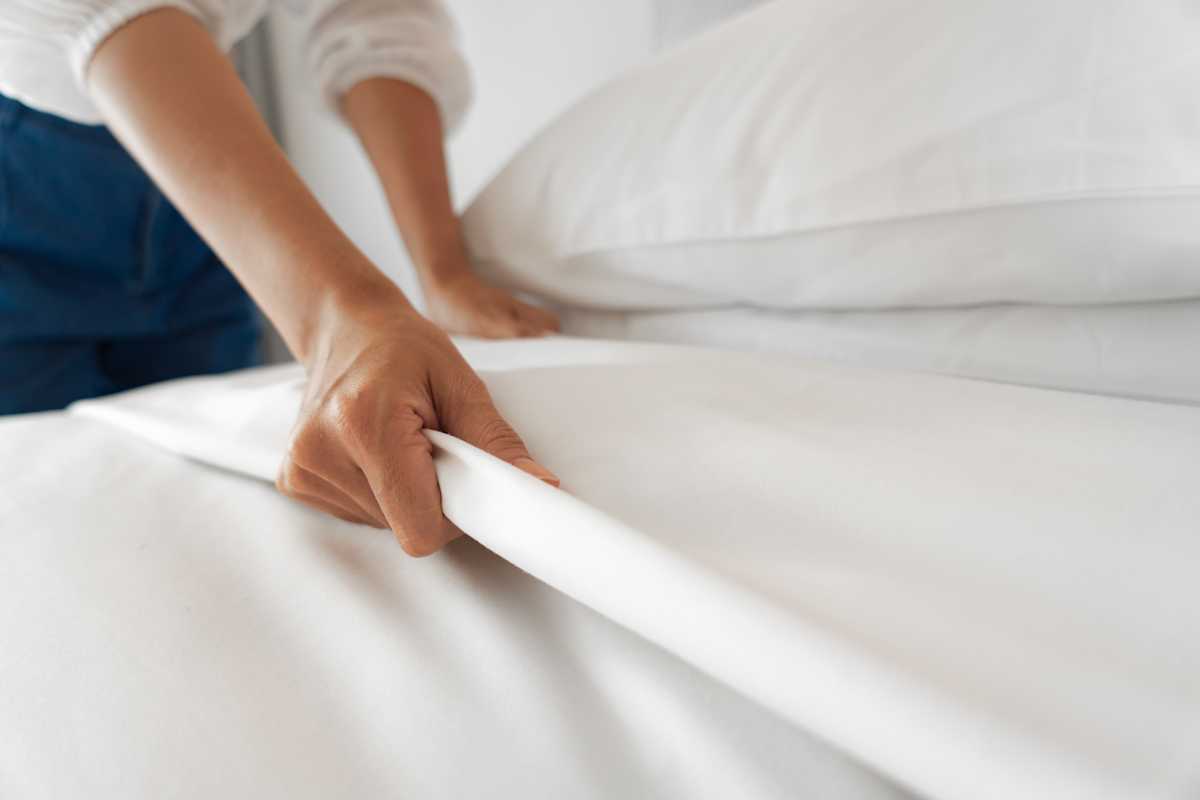Tips for getting rid of dust mites in your bed
Dust mites are tiny arachnids that you can’t see with the naked eye. There are many different species of mites. Either way, it’s not very pleasant to have these little creatures sharing your bed. Unfortunately, dust mites will continue to multiply if the problem isn’t addressed.
Dust mites thrive in warm environments — and even more so if it's also humid. That’s why beds make an ideal habitat for them.
Steps You Should Take
If you have a dust mite problem, you should change your bed linens frequently. Wash all bedding at a high temperature—dust mites are killed off when washed hot.
Keep in mind: mites love warmth and humidity. That’s why it’s a bad idea to make your bed right after getting up. Instead, let your bedding air out in the morning. Shake out your sheets and duvet if possible.
Unfortunately, mites can also settle into your mattress. In that case, you’ll need to clean the mattress.
There are several ways to clean a mattress. You can buy dedicated mattress-cleaning products. But there’s also a popular home remedy involving baking soda and essential oil. Mix the two in a spray bottle and apply the liquid evenly over the mattress. Let it sit for several hours, then vacuum up the mites and the dirt absorbed by the baking soda.
Keep in mind that these methods are short-term solutions. To eliminate dust mites for good, you must ensure proper ventilation in your home. Poor ventilation is problematic for many reasons, including the risk of mold.
Humidity is the key issue here. Mites thrive in high-humidity environments. One solution is to install a dehumidifier to regulate indoor humidity.
Lastly, avoid drying laundry indoors unless you have a dedicated space for it. Wet clothes add extra moisture to the air.
Regular mattress cleaning is also recommended—even if you don’t currently have a mite issue.
Home Ventilation
There are several ways to improve your home’s ventilation, but defining what constitutes “adequate” ventilation isn’t always straightforward. One guideline is to refresh the indoor air roughly 12 times a day.
Classic cross-ventilation (opening windows) isn't always enough. And even though mites won’t multiply as easily in drier air, they only need nighttime humidity—which naturally occurs under a warm duvet—for survival.
So in theory, you could air your room all day and still not solve the problem. Clean air and fresh sheets may help, but they’re not the full solution.
You should measure the humidity level in your home, especially in the bedroom. Mites thrive particularly well at humidity levels around 75%, and will multiply rapidly. Even at 50% humidity, they can still survive.
To prevent them from reproducing, aim for a humidity level of around 40%. Once that’s in place, do a thorough cleaning of your bedroom to eliminate the remaining mites.
Mites and Allergies
Dust mite allergies are an unfortunate side effect of these tiny creatures. At the same time, allergy symptoms can be a warning sign that something’s not right in your bed.
There are thousands of mite species, but only a few cause allergic reactions. The types that live in beds fall into that category. It's not the mite itself that triggers the allergy, but an enzyme found in its waste—commonly referred to as mite droppings.
These enzymes can accumulate in large quantities in your bed and mattress over time, especially since mites shed waste constantly. Some people are highly sensitive and may react to even a small number of these allergens.
How Do I Know If I Have an Allergy?
You’ll likely notice symptoms in the morning, especially because mites thrive in warm and humid bedding environments. Common signs of a mite allergy include:
Runny nose and nasal congestion
Red, itchy, or watery eyes
Frequent sneezing
Facts About Dust Mites
Some species of mites have existed for hundreds of millions of years—but they haven’t been sharing our beds for quite that long. It’s estimated that mites have coexisted with humans in beds for thousands of years.
Mites are unique in that they breathe through their skin. They also have no eyesight and navigate using darkness.
They eat a variety of substances depending on their environment. In beds, they feed on human skin flakes—which is a major reason they can survive for long periods in mattresses. Just one night’s sleep provides enough food for many mites for several days.
As mentioned, they can survive in poor conditions for a while—such as during regular ventilation. That’s because the moist environment at night is enough to sustain them. Mites also lose weight to survive, which helps them live longer but makes it harder for them to reproduce.
Typically, a dust mite lives for around 90 days. Under ideal conditions, they can produce up to 100 offspring in their lifetime. That’s why it’s essential to address the root of the problem quickly if you discover mites in your bed.
